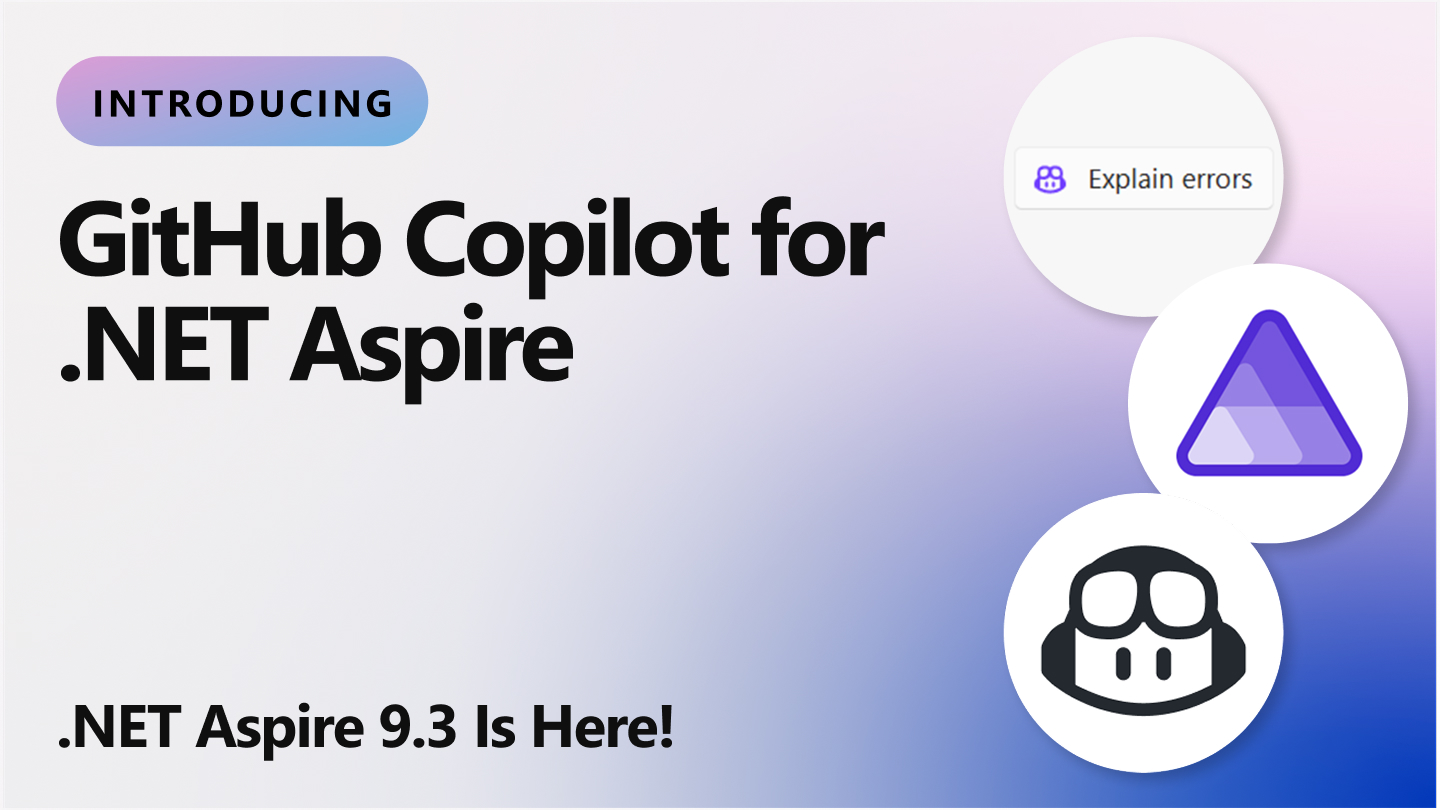No trial. No credit card required. Just your GitHub account.
.NET Blog
Free. Cross-platform. Open source. A developer platform for building all your apps.
Featured posts

.NET Aspire 9.3 is here and enhanced with GitHub Copilot!
.NET Aspire 9.3 is the biggest release of .NET Aspire yet, with the introduction of GitHub Copilot directly into the .NET Aspire Dashboard, updates for integrat...
Latest posts

Katana License Lifts Windows-only Restriction
(cross-posted from http://codebetter.com/howarddierking/2013/07/23/katana-license-lifts-windows-only-restriction/) Over the past few months, a great deal of attention has been paid to the following clause used in most of the licenses associated with the NuGet packages that we and other teams at Microsoft ship. “ a. Distribution Restrictions. You may not … distribute Distributable Code to run on a platform other than the Windows platform;” In the case of the ASP.NET-related projects, including project Katana, this license (and the associated restriction) does not apply to the source code, but rather to the c...

Publish HTML/JS website to Linux/Apache using Visual Studio
We received a question about how to use Visual Studio to deploy HTML/JS website to Linux / Apache. To do it, you need to create an empty ASP.NET website project in Visual Studio (File->New Web Site…) and then include all the HTML/JS files. 1. Right click on the website Project, select “Publish Web Site”. 2. Drop down the Publish Profile drop down and select New Profile. Name it “FTP” or whatever you want to call it. 3. On the Connection Tab set Publish method to FTP, fill in FTP server, root folder for the website on the server, user name and password. 4. Click &l...

Writing Web API Client Code for Multiple Platforms Using Portable Libraries
The Microsoft ASP.NET Web API Client Libraries make it easy to write .NET clients that interact with RESTful HTTP services. Unfortunately, until recently the Web API client libraries did not support all platforms. Because of this limitation, developers had to maintain different code, depending on the target platform. The new release of Microsoft ASP.NET Web API Client Libraries now comes with support for building portable libraries that target .NET 4.5, Windows Store and Windows Phone 8 applications. This support is built on the recently released portable HttpClient and the portable library support in Json.NET. ...

HttpClient 2.2 is now stable
As promised, we’ve just pushed the RTM version of HttpClient 2.2 to NuGet. This version adds support for automatic decompression. As announced here, this doesn’t require a dependency on Microsoft.Bcl.Compression. This allowed us to support automatic decompression on more platforms and without forcing your projects to change the CPU architecture. It’s worth noting that we didn’t make any changes since the RC version we published a week ago (despite changing the version). How to use automatic decompression (For the sake of keeping this post self-contained I’ve copied the content from t...

Tracing in ASP.NET MVC Razor Views
System.Diagnostics.Trace can be a useful tool for logging and debugging, and sometimes it would be handy to be able to call one of the tracing methods from a Razor view. For example, when an MVC application runs in production, by default MVC catches most application exceptions for you and routes them to Views/Shared/Error.cshtml. That view doesn’t show error details for security reasons, so you end up with the not-very-helpful message “An error occurred while processing your request.” Running locally you get detailed error info, or you can catch exceptions by running in debug mode, but what to do about err...

Responsible for a million dollar software project, but don’t know where to start?
This post was written by Cesar De la Torre Llorente, a member of the .NET Marketing team. Cesar provides guidance on .NET to customers and to sales, marketing, and support professionals at Microsoft. We just released a new guide that provides a global and broad picture of Microsoft development technologies for business applications. You can learn more at our .NET Technology Guidance site, or download the .NET Technology Guide for Business Applications directly. This guide is primarily intended for decision makers, architects, and developers who are responsible for selecting technologies and patterns for the...

“Enable Edit and Continue” debugging option is now on by default for new web applications in VS2013 preview
In VS2010 and VS2012, the edit and continue option is disabled by default when creating a new web application project. In VS2013 preview, we turned it on by default. You can find this option on the Web tab in the web project’s properties window. With “Enable Edit and Continue” on, the VS debugger starts your web application in IIS Express. When you stop debugging, IIS Express is closed too. With this behavior, you will see the IIS Express system tray shows up during debugging and gone after debugging. This behavior is the same as in VS2012 when the Enable Edit and Continue option is tu...

HttpClient 2.2 is now RC
Today we are happy to announce the next step in providing a portable HttpClient with automatic decompression: we just pushed the RC version to NuGet. From Beta to RTM We haven’t changed much since the beta we shipped three weeks ago – simply because we didn’t have to. In general we follow these steps when shipping functionality via NuGet: For HttpClient 2.2 we’ve changed the following since the beta: Summary Today we’ve shipped the RC for HttpClient 2.2, which updates HttpClient by adding support for automatic decompression. It's supported on .NET 4.0, Windows Pho...

How does VS determine which version of Razor engine to use when editing razor webpage files
In VS2013 Preview, we released new Razor V3 runtime and design time Engine to support MVC5 and Razor V3 website’s runtime and design time behavior. Unlike Razor V2 runtime and design time, VS2013 did not GAC these binaries. Instead, the binaries are installed in the project bin folder when corresponding NuGet package is installed, and in “%ProgramFiles (x86)%\Microsoft Visual Studio 12.0\Common7\IDE\CommonExtensions\Microsoft\Web\Razor\v3.0” to support design time. As in VS2012 to determine which razor v1/v2 design time dlls to load, VS 2013 preview first use web.config file key <add key="web...
